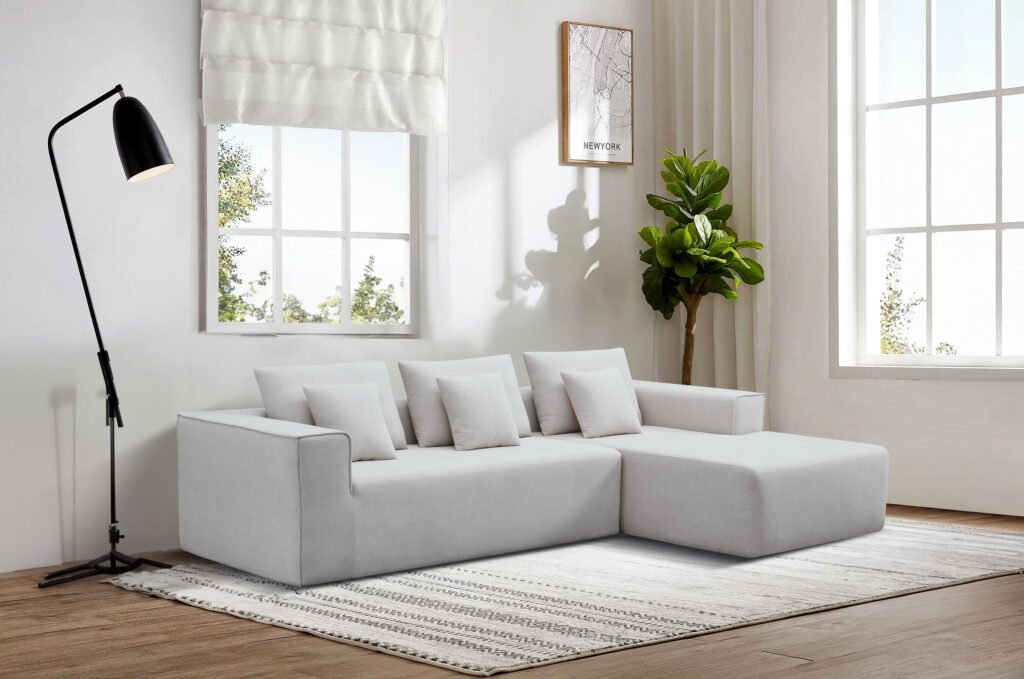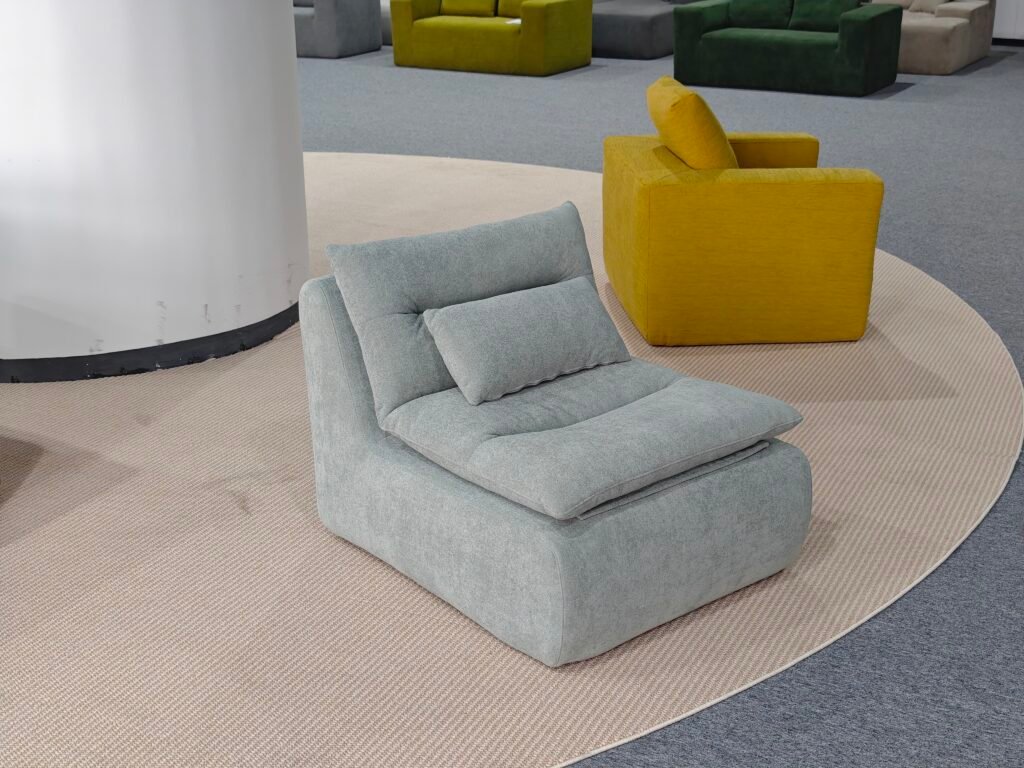Shipping compress sofas internationally requires meticulous preparation to ensure the product arrives in perfect condition. Compress sofas, especially modular ones like those offered by Modular-Sofas.com, benefit from vacuum compression technology that reduces their volume for efficient transport. However, the sealing process is critical to protect the sofa from damage caused by moisture, dust, pressure, and handling during long-distance shipping.


This article provides a detailed guide on how to perfectly seal a compress sofa for international shipping, covering materials, techniques, and best practices to maximize protection and maintain product quality.
Understanding the Importance of Proper Sealing for Compress Sofas
Compress sofas undergo vacuum compression to significantly reduce their size, making them easier and more cost-effective to ship. However, once compressed, the sofa becomes vulnerable to external factors such as:
- Moisture and humidity: Can cause mold, mildew, and fabric damage.
- Dust and dirt: Can soil the fabric and affect appearance.
- Physical damage: Pressure or punctures during transit can compromise the vacuum seal, causing the sofa to expand prematurely.
- Temperature fluctuations: Can affect foam resilience and fabric integrity.
Proper sealing ensures that the compressed sofa maintains its compact form and remains protected throughout the shipping process, especially during international transit where exposure to varying conditions is common.
Key Materials for Sealing a Compress Sofa
- Vacuum-Seal Bags
High-quality, multi-layer vacuum-seal bags are essential. These bags are typically made from durable polyethylene or nylon composites that resist punctures and tears while maintaining airtight seals. - Heat Sealers
A heat sealer is used to close the vacuum bags securely. This equipment melts the bag edges to create a strong, airtight seal that prevents air or moisture ingress. - Protective Outer Wraps
Additional layers such as stretch wrap, bubble wrap, or heavy-duty plastic sheeting provide mechanical protection against abrasion, punctures, and impact. - Desiccant Packs
Including silica gel or other desiccants inside the packaging absorbs residual moisture, preventing mold and mildew during transit. - Reinforced Packaging Boxes or Crates
For international shipping, placing the vacuum-sealed compress sofa inside a sturdy cardboard box or wooden crate adds another layer of protection against rough handling.
Step-by-Step Guide to Perfectly Seal a Compress Sofa
Step 1: Prepare the Sofa for Compression
- Clean the sofa thoroughly to remove dust and debris.
- Ensure all modular components are detached if applicable.
- Check for any damages or loose parts and repair before packing.
Step 2: Compress the Sofa Using Vacuum Technology
- Place the sofa or its components inside the vacuum-seal bag.
- Use a commercial-grade vacuum pump to remove air gradually.
- Compress until the sofa reaches the desired compact size without over-compressing, which can damage foam cells.


Step 3: Heat Seal the Vacuum Bag
- Immediately after vacuuming, use a heat sealer to close the bag edges.
- Apply consistent pressure and heat to ensure a complete airtight seal.
- Double-seal the edges if possible for extra security.
Step 4: Add Desiccant Packs Inside the Bag
- Place desiccant packs inside the vacuum bag before sealing or in the outer packaging to absorb moisture.
Step 5: Wrap the Vacuum-Sealed Sofa
- Use bubble wrap or stretch film to cover the vacuum-sealed sofa.
- Pay special attention to corners and edges that are prone to punctures.
Step 6: Place the Sofa in a Protective Outer Box or Crate
- Choose a box or crate sized to fit the wrapped sofa snugly.
- Add cushioning materials such as foam inserts or packing peanuts to prevent movement.
- Seal the box securely with heavy-duty packing tape.
Step 7: Label the Package Clearly
- Include handling instructions such as “Fragile,” “Keep Dry,” and “This Side Up.”
- Attach shipping labels and customs documentation as required.
Common Mistakes to Avoid When Sealing Compress Sofas
- Using low-quality vacuum bags that puncture easily.
- Over-compressing the sofa, leading to foam damage.
- Failing to double-seal vacuum bags.
- Neglecting moisture control with desiccants.
- Skipping protective outer wrapping or sturdy packaging.
- Inadequate labeling causing mishandling during transit.
Comparison Table: Packaging Materials and Their Roles in Compress Sofa Shipping
| Packaging Material | Purpose | Advantages | Considerations |
|---|---|---|---|
| Vacuum-Seal Bag | Air and moisture barrier | Airtight, space-saving | Must be puncture-resistant |
| Heat Sealer | Creates airtight seal | Strong, reliable sealing | Requires proper equipment |
| Bubble Wrap | Physical protection | Cushions against impact and abrasion | Adds some bulk to package |
| Stretch Film | Additional surface protection | Flexible, tear-resistant | Less cushioning than bubble wrap |
| Desiccant Packs | Moisture absorption | Prevents mold and mildew | Must be replaced if saturated |
| Cardboard Box | Outer protection | Lightweight, recyclable | Less impact resistance than crates |
| Wooden Crate | Heavy-duty outer protection | Excellent impact resistance | Higher cost and weight |
Why Modular-Sofas.com Compress Sofas Are Ideal for International Shipping
Modular-Sofas.com designs compress sofas with international shipping in mind. Our products feature:
- Durable, skin-friendly fabrics that resist wear during compression and transit.
- High rebound foam and latex cushions that maintain shape after repeated compression.
- Modular components that can be packed separately to reduce stress on any single piece.
- Compatibility with vacuum compression and sealing techniques to optimize shipping efficiency.
- Sustainable materials and manufacturing that align with global environmental standards.


Best Practices for Shipping Compress Sofas Internationally
- Coordinate with experienced freight forwarders familiar with vacuum-packed furniture.
- Choose shipping methods that minimize transit time and exposure to extreme conditions.
- Insure shipments against damage or loss.
- Provide clear instructions to handlers regarding unpacking and sofa care.
Conclusion
Perfectly sealing a compress sofa for international shipping is a critical step to ensure the product arrives in excellent condition and maintains its comfort and durability. By using the right materials, following proper vacuum compression and sealing procedures, and employing protective packaging, you can safeguard your compress sofa against the challenges of long-distance transit.
For high-quality modular compress sofas designed with shipping in mind, Modular-Sofas.com offers a range of products and expert guidance to help you optimize your shipping process and deliver exceptional guest experiences in Airbnb rentals, pop-up stays, and beyond.
This article provides a foundational overview and practical tips. For a more detailed guide with expanded sections on foam technology, case studies, maintenance, and sustainability, further content can be developed to reach a comprehensive 4000-word article.